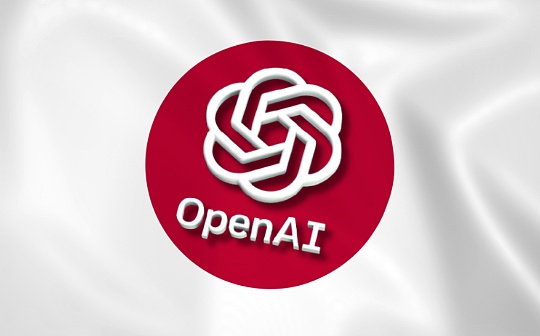Written by: AIMan@
On April 25, 2025, Citi Institute, a subsidiary of Citibank, released a research report on "Digital Dollar". Key points of research report are:
1. 2025 is expected to become the "ChatGPT moment" for blockchain to be used in the financial and public sectors, a trend driven by regulatory changes.
2. Citi forecast,The total circulating supply of stablecoins in 2030 may increase to US$1.6 trillion under the basic situation; it may increase to US$3.7 trillion under the optimistic situation, and it may increase to US$500 billion under the pessimistic situation.
3. ExpectedStablecoin supply will still be mainly denominated in US dollars (about 90%), not the United States will promote the development of CBDC in their own country.
4. The US regulatory framework for stablecoins may drive new net demand for US Treasury bonds.By 2030, stablecoin issuers may become one of the largest holders of U.S. Treasury bonds。
5. Stable coins pose a certain threat to the traditional banking ecosystem by replacing deposits. But they may also offer new services to banks and financial institutions.
As the title of its report, “Digital Dollar” means, Citi is highly optimistic about stablecoins, and the report has a chapter specifically explaining that “the ChatGPT moment for stablecoins is coming soon.” AIMan specially compiled the Stablecoins: A ChatGPT Moment?" chapter, as follows:
How do stablecoins work?
Stablecoins are cryptocurrencies designed to maintain stable value by pegging market prices to reference assets. These reference assets can be fiat currencies such as US dollars, commodities such as gold, or a basket of financial instruments. Key components of a stablecoin system include:
Stablecoin Issuer:The entity that issues stablecoins is responsible for maintaining its price peg by holding underlying assets equivalent to the supply of stablecoins circulation.
Blockchain ledger:After the stablecoin is issued, the transaction is recorded on the blockchain ledger. The ledger provides transparency and security by tracking ownership and flow of stablecoins between users.
Reserves and mortgages:Reserves ensure that each token can be redeemed at the peg value. For stablecoins secured in fiat currency, these reserves usually include cash, short-term government securities and other current assets.
Digital wallet provider:Provides a digital wallet, which can be a mobile application, hardware device, or software interface, allowing stablecoin owners to store, send and receive their tokens.
How do stablecoins maintain their pegged value?
Stablecoins rely on different mechanisms to ensure their value is consistent with their underlying assets. The fiat-backed stablecoins maintain the peg by ensuring that each issued token can be exchanged for an equal amount of fiat currency.
The main stablecoins
As of April 2025, the total supply of stablecoins in circulation has exceeded US$230 billion, an increase of 54% since April 2024.. The top two stablecoins dominate this ecosystem, with market share exceeding 90% by value and transaction number, with USDT at the top and USDC at the bottom.
Figure 3 Stable coins supply from 2020 to 2025
In recent years, stablecoins trading volume has grown rapidly. After adjustment,The monthly trading volume of stablecoins in Q1 2025 is between 650 billion and 700 billion US dollars, about twice the level from the second half of 2021 to the first half of 2024. Supporting the crypto ecosystem is the main application scenario of stablecoins.
USDT, the largest stablecoin, was launched on the Bitcoin blockchain in 2014 and expanded to the Ethereum blockchain in 2017, enabling it to be used in DeFi. In 2019, it further expanded to the widely used tron network in Asia due to faster and lower costs. USDT is largely operating offshore, but times are changing.
Figure 4 Comparison of stablecoin transaction volume with other payment methods (unit: billion US dollars)
We will certainly see more players (especially banks and traditional institutions) entering the market. Stablecoins backed by USD will continue to dominate. Ultimately, the number of participants will depend on the number of different products required to cover the main application scenario, and there may be more participants in that market than the bank card network market. ——Matt Blumenfeld, Head of Digital Assets, KPMG Global and U.S.
What are the driving factors for the adoption of stablecoins in the United States and around the world?
Erin McCune, founder of Forte FinTech:
Practical advantages (speed, low cost, available 24/7): Demand is created in developed economies (especially countries where instant payments are not widely available, SMEs are not fully serviced by existing institutions, and multinational corporations want to make global funds more convenient) and emerging economies (regions where cross-border transactions are high, banking technology is immature, and/or financial inclusion lags).
Macro demand (held inflation, financial inclusion): In some regions, stablecoins have become people's "lifeline". The currencies of countries such as Argentina, Türkiye, Nigeria, Kenya and Venezuela are fluctuating greatly, and consumers use stablecoins to protect their funds. Today, more and more remittances are in the form of stablecoins, and consumers without bank accounts can also use digital dollars.
Support and integration of existing banks and payment providers: This is the key to the legalization of stablecoins (especially for institutional and enterprise users) and can quickly expand its scope of use and practicality. Mature, large-scale payment networks and core processors can bring transparency and facilitate integration with familiar solutions that businesses and merchants rely on. Implementing a clearing mechanism between different stablecoins and between banks and non-bank institutions is also crucial to expanding the scale. Technology improvements for consumers (easy-to-use wallets) and merchants (integrating stablecoin collection features through APIs to acquiring platforms) are eliminating barriers that once restricted stablecoins to the crypto edge.
Long-term expected regulatory clarity: This enables banks and the broader financial services industry to adopt stablecoins in retail and wholesale operations. Transparency (audit requirements) and consistent liquidity management (reliable parity) will also simplify operational integration.
Matt Blumenfeld, Head of Global and U.S. Digital Assets, KPMG:
User Experience: The global payment landscape is increasingly shifting to real-time digital transactions. But the challenge facing each new payment method in the promotion process lies in customer experience - whether it is intuitive and easy to understand, whether it can see the application scenario, and whether the value is clear. Any institution that successfully improves its customer experience, whether for retail users or institutional users, will make its mark in its respective fields. The integration with current payment methods will promote the popularization of the next wave of payment methods. On the retail side, this is manifested as a combination with bank card payment or penetration in the mobile wallet field; on the institutional side, it is reflected in a simpler, more flexible and more cost-effective settlement method.
Regulatory Clarity: With the introduction of new stablecoin regulatory policies, we can see to what extent regulatory uncertainty has previously suppressed innovation and promotion around the world. The launch of the EU's Crypto Asset Market Supervision Regulations (MiCA), the clarification of regulation in Hong Kong, and the advancement of US stablecoin legislation have all triggered a wave of activities focusing on simplifying the flow of institutions and consumers' funds.
Innovation and efficiency: Institutions must regard stablecoins as a boost to achieving more flexible product development, which is not easy at present. This means providing a more convenient, creative and attractive medium to enhance the functionality of traditional bank deposits, such as generating income, being programmable and combining.
The potential market size of stablecoins
As Erin McCune, founder of Forte Fintech, pointed out, any forecast of the potential market size of stablecoins requires some caution. There are many variable factors, and our scenario analysis also shows a wide range of predictions.
We have constructed a forecast range based on the following factors driving the growth of stablecoin demand:
Some overseas and domestic US dollars have shifted from paper currency to stablecoins: Dollar notes held overseas are usually a safe haven for hedging local market volatility, and stablecoins are a more convenient way to get this hedge. in the country, stablecoins can be used to some extent for certain payment functions and are held for this purpose.
Households and businesses in the United States and internationally reconfigure some of the US dollar's short-term liquidity to stablecoins: This is because stablecoins are easy to use (such as 24/7 cross-border transactions, etc.), which helps cash management and payment operations. If regulation allows, stablecoins may also partially replace earning assets.
Furthermore, we assume that the EUR/GBP short-term liquidity held by US households and businesses will also show a reconfiguration trend similar to the US dollar short-term liquidity, albeit at a much smaller scale. Our overall benchmark and optimistic scenario forecasts for 2030 both assume that the stablecoin market remains dominant (about 90% of the share).
Growth of the public cryptocurrency market:Stable coins are used in it as settlement tools or deposit channels. This is to some extent driven by institutions' adoption of public cryptocurrency assets and the widespread use of blockchain technology. In our benchmark scenario, assume that the growth trend of stablecoins issuance scale in 2021-2024 continues.
Citigroup Research Institute expects thatThe benchmark situation for the stablecoin market size in 2030 is US$1.6 trillion, the optimistic situation is US$3.7 trillion, and the pessimistic situation is US$0.5 trillion.
Figure 5 Forecast of stablecoin market size in 2030
Figure 6 Stabilizer market size in 2030
Note: The total amount of money (circulating cash, M0, M1 and M2) in 2030 is calculated based on nominal GDP growth. The euro zone and the UK may issue and adopt local currency stablecoins. China may adopt sovereign central bank digital currencies and is unlikely to adopt stablecoins issued by foreign privately. It is estimated that the size of non-USD stablecoins in bear markets, basic and bull markets will be US$21 billion, US$103 billion and US$298 billion respectively in 2030.
Stablecoin Market Outlook
Forte Fintech founder Erin McCune
Q: What do you think about the optimistic and cautious prospects of the stablecoin market size in the near future and the potential factors driving its development trajectory?
Predicting the growth of the global stablecoin market requires great confidence (or overconfidence) because there are still many unknown factors. As a reminder, the following is my scenario analysis of the bull market and bear market:
The most optimistic forecast is that as stablecoins become the daily medium for instant, low-cost, low-friction transactions around the world, the market will expand 5-10 times. In a bull market scenario, the value of stablecoins will increase exponentially from the current approximately US$200 billion to reach US$1.5-2.0 trillion by 2030, penetrating global trade payments, individual-to-person remittances and mainstream banking businesses. This optimistic expectation is based on several key assumptions:
Advantageous regulation in key regions: not only Europe and North America, but also markets with the largest demand for alternative local fiat currencies, such as Sub-Saharan Africa and Latin America.
True trust between existing banks and new entrants: and broad confidence among consumers and businesses in the integrity of stablecoin reserves (e.g., 1 dollar stablecoin = 1 dollar equivalent fiat currency).
Income (and savings) on the value chain are intentionally distributed: to facilitate cooperation.
Widely adopt technologies that connect old and new infrastructure: promoting structural efficiency and scale expansion. For example, merchant acquiring agencies have begun to use stablecoins. For wholesale payment applications, corporate finance and accounts payable solutions and financial supervisors will need to make adjustments. Commercial banks also need to deploy tokenization and smart contracts.
In a bear market scenario, the use of stablecoins will be limited to crypto ecosystems and specific cross-border use cases (mainly markets with insufficient currency liquidity, which currently account for a small proportion of global GDP). Geopolitical factors, resistance to digital dollarization and widespread adoption of central bank digital currencies will further hinder the growth of stablecoins. In this case, the market capitalization of stablecoins may stagnate between $300 and $500 billion, with limited correlation in the mainstream economy. The following factors will lead to more pessimistic scenarios:
If one or more major stablecoins experience reserve failure or decoupling events: This will significantly undermine the trust of retail investors and businesses.
Friction and costs when using stablecoins for daily purchases: For example, remittance recipients cannot use them to purchase groceries, pay tuition and rent, and businesses cannot easily use their funds for wages, inventory and other aspects.
Retail central bank digital currencies have not gained appeal yet: but stablecoins may be less relevant in regions where digital cash alternatives offered by the public sector are scaled.
In regions where stablecoins develop and further weaken local fiat currency relevance: central banks may respond by tightening regulation.
If the size of stablecoins supported by full reserves grows too much: this could “lock” a large number of secure assets as support, potentially limiting credit in the economy.
Q: What are the current and future application scenarios of stablecoins?
Like any other form of payment, the relevance and potential growth of stablecoins must be considered based on the specific application scenario. Some application scenarios have attracted attention, while others are still at the theoretical stage or are obviously unrealistic. The following are the current (or recent) meaningful stablecoin application scenarios, arranged from large to small according to their contribution to the final market volume of stablecoin (TAM):
Cryptocurrency trading: At present, the use of stablecoins by individuals and institutions to trade digital assets is the largest application scenario for stablecoins, accounting for 90-95% of stablecoins transaction volume. Most of this activity is driven by algorithmic trading and arbitrage. Given the continued growth of the cryptocurrency market and its reliance on stablecoin liquidity, trading (retail + decentralized financial activity) may still account for about 50% of stablecoin usage by value in the maturity stage.
Business-to-business payments (company payments): According to the Global Banking Financial Telecommunications Association (Swift), the transaction value of most traditional agency banking businesses can reach their destination in minutes through the Swift Global Payment Innovation Platform. But this mainly occurs between monetary center banks, using currency with better liquidity and during bank business hours. Especially when operating with low- and middle-income countries, there are still many inefficiencies and unpredictable situations. Businesses using stablecoins to pay overseas suppliers and manage their operations may account for a considerable share of the stablecoin market. The global business-to-business flow has reached trillions of dollars, and in the long run, even if only a small percentage of them turn to stablecoins, it may account for about 20-25% of the final market of stablecoins.
Consumer Remittances: Although payment methods are steadily shifting from cash to digital payments, under regulatory pressure and new entrants have made efforts, the cost of sending money to family and friends in China is still high (the average transaction cost of USD 200 per transaction is 5%, five times the G20 target). Stablecoins are expected to hold a significant share of the remittance market of about $1 trillion due to lower fees and faster speeds. If the promised instant account arrival and a substantial reduction in costs can be achieved, this could account for 10-20% of the market under high adoption rates.
Institutional trading and capital markets: The application scenarios of stablecoins used in professional investors or tokenized securities trading settlement are constantly expanding. Large-scale capital flows (foreign exchange, securities settlement) may begin to use stablecoins to speed up settlement. Stablecoins can also simplify the fundraising process for retail stock and bond purchases, which is currently usually achieved through batch automatic clearing house processing. Large asset management companies are already piloting the use of stablecoins for fund settlement, laying the foundation for their widespread use in the capital market. Given the large amount of payment flows between financial institutions, this application scenario may account for about 10-15% of the stablecoin market even if the adoption rate is not high.
Interbank liquidity and fund management: Although banks and financial institutions use stablecoins in internal or interbank settlements, although they account for a relatively small proportion (maybe less than 10% of the total market), they have a greater potential impact. Industry leaders have already launched blockchain projects with over $1 billion in transactions per day, demonstrating its potential, although regulation remains unclear. This area may grow significantly, but may overlap with the above-mentioned institutional use scenarios.
Stablecoins: bank cards, central bank digital currency and strategic autonomy
We believe that stablecoin usage may grow, and these new opportunities will create space for new entrants. The current issuance duopoly pattern may continue in the offshore market, but new players may join in the onshore market in each country. Just like the bank card market that has evolved over the past 10-15 years, the stablecoin market will change.
Stablecoins have some similarities with the bank card industry or cross-border banking business. All these fields have high network or platform effects and there is a strong reinforcement cycle. More merchants accept a trusted brand (such as Visa, Mastercard, etc.) and will attract more cardholders to choose the card. Stablecoins have similar usage loops.
In larger jurisdictions, stablecoins are usually outside financial regulation, but this is currently changing in the EU (2024 Crypto Asset Market Regulation Regulations) and the US (relevant regulation is advancing). The need for stricter financial regulation, along with high cost requirements from partners, could lead to centralization of stablecoin issuers, as we see in the bank card network.
Fundamentally, having a few stablecoin issuers is beneficial to the wider ecosystem. While one or two major players may seem more concentrated, too many stablecoins can lead to fragmentation and inexchangeable currency forms. Stablecoins can only flourish when they have scale and liquidity. Raj Dhamodharan, Executive Vice Chairman of Mastercard Blockchain and Digital Assets
However, the ever-evolving political and technological development trends have made the bank card market increasingly different, especially outside the United States. Will the same happen in the stablecoin field? Many countries have developed their own national bank card programs, such as Brazil's Elo card (launched in 2011), India's RuPay card (launched in 2012), and so on.
Many of these national bank card programs were launched for national sovereignty and were driven by local regulatory changes and political encouragement to domestic financial institutions. They also facilitate integration with new national real-time payment systems, such as Brazil’s Pix system and India’s Unified Payment Interface (UPI).
Although international bank card programs have continued to grow in recent years, their share in many non-U.S. markets has declined. In many markets, technological changes have led to the rise of digital wallets, account-to-account payments and super apps, all eroding its market share.
Just like the proliferation of national programs we see in the bank card market, we will likely see jurisdictions outside the United States continue to focus on developing their own central bank digital currency (CBDC) as a tool for national strategic autonomy, especially in the areas of wholesale and corporate payments.
A survey of 34 central banks by the Official Currency and Financial Institutions Forum (OMFIF) shows that 75% of central banks still plan to issue central bank digital currencies. It is expected that the proportion of respondents who issue central bank digital currencies will increase from 26% in 2023 to 34% in 2024. Meanwhile, some practical implementation issues are becoming increasingly apparent, with 31% of central banks postponing issuance due to legislative issues and their desire to explore broader solutions.
CBDC began in 2014 when the People's Bank of China began researching the digital RMB. Coincidentally, this is also the year when Tether was born. In recent years, driven by private market forces, stablecoins have developed rapidly.
In contrast, the central bank's digital currency is still largely in the official pilot project stage. A few smaller economies that launched national central bank digital currency projects have not seen a large number of users spontaneous use. However, the recent intensification of geopolitical tensions may raise more attention to central bank digital currency projects.
Stablecoins and banks: Opportunities and risks
The adoption of stablecoins and digital assets provides new business opportunities for some banks and financial institutions to drive revenue growth.
The role of banks in the stablecoin ecosystem
Matt Blumenfeld, Head of Digital Assets, Global and U.S., PwC
Banks have many opportunities to participate in the stablecoin field. This can be a more indirect role such as being a stablecoin issuer, or as part of a payment solution, building structured products around stablecoins, or providing general liquidity support. Banks will find ways to continue to be exchange mediums for capital flows.
As users pursue more attractive products and better experiences, we see deposits flowing out of the banking system. With the help of stablecoin technology, banks have the opportunity to create better products and experiences while keeping their deposits in the banking system (users usually prefer deposits to be guaranteed in the banking system), but through new channels.
Figure 7: Banks and Stablecoins: Income and Business Opportunities
At the system level, stablecoins may have similar effects as “narrow banking”, and the pros and cons of such institutions have long been debated at the policy level. The transfer of bank deposits to stablecoins may affect banks' ability to lend. This decline in lending capacity may at least curb economic growth during the transition period of system adjustments.
Traditional economic policies oppose narrow-sense banks, as summarized in the 2001 International Monetary Fund report, out of concerns about credit creation and economic growth. The Cato Institute put forward the opposite view in 2023, with similar voices saying that "narrow banking" can reduce systemic risks, while credit and other capital flows will be adjusted accordingly.
Figure 8: Different views on narrow banking
















No comments yet